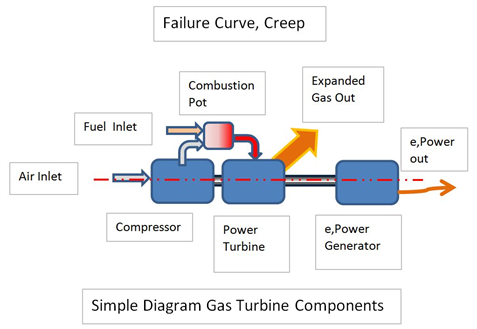



The make up of Capability for Gas Turbines is governed by the sizes of Gas Turbines available. These are usually aero derivative which controls their size. This fact comes about not as a result of the actions of the Offshore (Onshore) users but as a result of the Aero Industry. Examples are GE for Embla and Veslefrikk for Power Generation using a 24 mWe machine. The pictures of BP Magnus shows the GE Frame 5 GT's an industrial GT. These are heavy, will run for years with minimal downtime. The alternative is an equal power aero derivative with a pronounced definitive life to change out, they are light smaller and require far smaller foundations. The whole range of aero derivative are as the name suggests related to Aero Engines. The Jumbo Jet initiated a mass market for Gas Turbines, 4 per plane of a specific size, other sizes had similar demands. The Offshore unit of choice became a driver producing around 24 mW, it was light compact but came with some restraints. The Aero Engine market is conditioned by the industry demand of a light reliable engine. By design and to meet these requirements we have an engine that once it starts it operational life it runs free of problems, needs minimal maintenance, is light and powerful. To do this we have a design made from alloys, low in weight, resistant to heat, minimal creep etc however such a design has a relative finite life before requiring major refurbishment. The bell shaped diagram illustrates the characteristics of the reliability of an Aero GT. Stage 1, sometimes on bringing into service some of the shortcomings of manufacture appear. Once this Stage is over the GT perfoms with consistently a low probability of failure and low wear. After a fairly uniform period of time wear may start to occur ( towards the end of Stage 2), without much impact. Then at a predeterminable point wear accelerates and exponentially increases to failure in Stage 3. We can assess that for a new engine that at the commencement of stage 2 to the end of that stage we can use the engine with little likelihood of failure or problems. Aero engines are run hour monitored, start ups, shutdowns and at a predetermined point changed out. This approach is also adopted for offshore GT Power Generation. The diagram shows the component parts of the gas Turbine. The diagram from the Kristin FEED shows the peripherals required. The air taken in for combustion must have solids filtered. It must also have any traces of sodium/saline water separated out, the alloy components of the engine are prone to damage from these. The exhaust needs to be silenced and for improvement of thermal efficiency have a Heat Recovery Section. These combined become essential parts of the Power Generation Module. Many of the comments concerning power generation and drivers equaly apply to rotary compression.
Power Generation Offshore has various Drivers, the most popular is probably Gas Turbine, alternatives are Diesel or Gas Engines and Steam Turbine. The choice of Driver can be conditioned by many things, choice of Fuel being one. The Fuels used are usually not freely available, Marine Propulsion is usually some form of Marine Diesel, heavy Fuel Oil, Bunker C. The engines for Power Generation must be light and powerfull and usually have a preference for special fuels. Very often Power Generation is one of the few subjects where modularisation concerns both the definition of the object, a module but also the repetitive singleness of designs, sizing is in steps e.g. to meet a power generation requirement of 12 mW with some redundancy, 3 x 5 mW or 2 x 6 mW can be selected for incorporation into a single Module or 3 Modules, a building block approach can be adopted. This approach also can be used if diesel Drives are selected, the Wartsilla information pack for drilling shows power generation from a modular approach uses a number of common machines connected in series to meet demand. Examples of this phenomena are Usige Gorm and West Navion both using Wartsilla Diesels Deisel sizes a smaller where as Gas/Steam Turbines are used for the larger demands. The next sub sections review Gas Turbines in general due to there dominance Offshore.
.png)
GT Performance Life
a general understanding of Modules
MODULEitus
C2V Where you see this, Click too View
C2V

Gas Turbine Simple Diagram
C2V
C2V
These other sub sections above elaborate some aspects/comments on Power Generation :-
C2V Where you see this, Click too View
Level 1
Level 3
Level 2
Index, Section 4 Modules Offshore
C2V
C2V
C2V Where you see this, Click too View
C2V
C2V
Level 2






